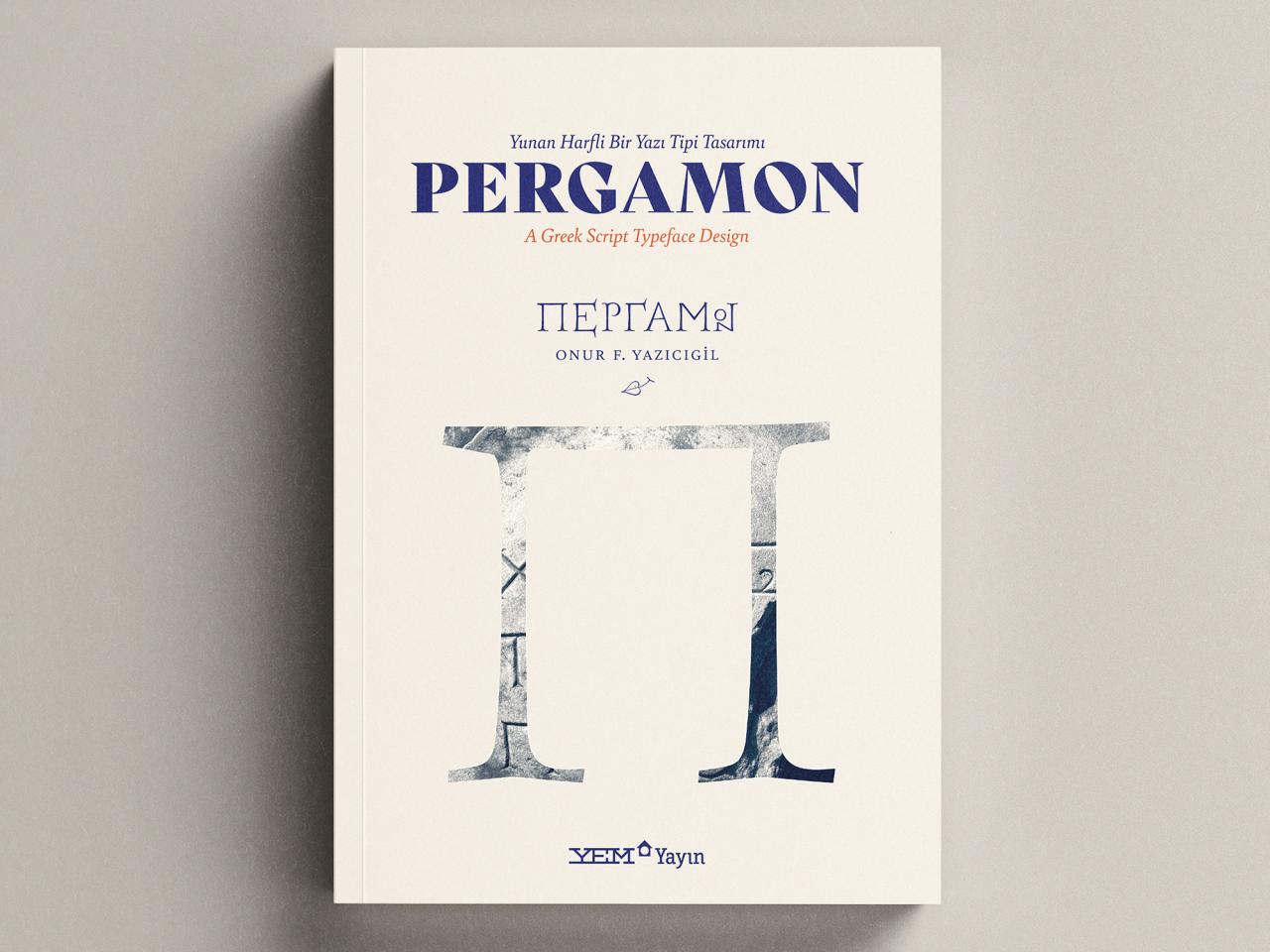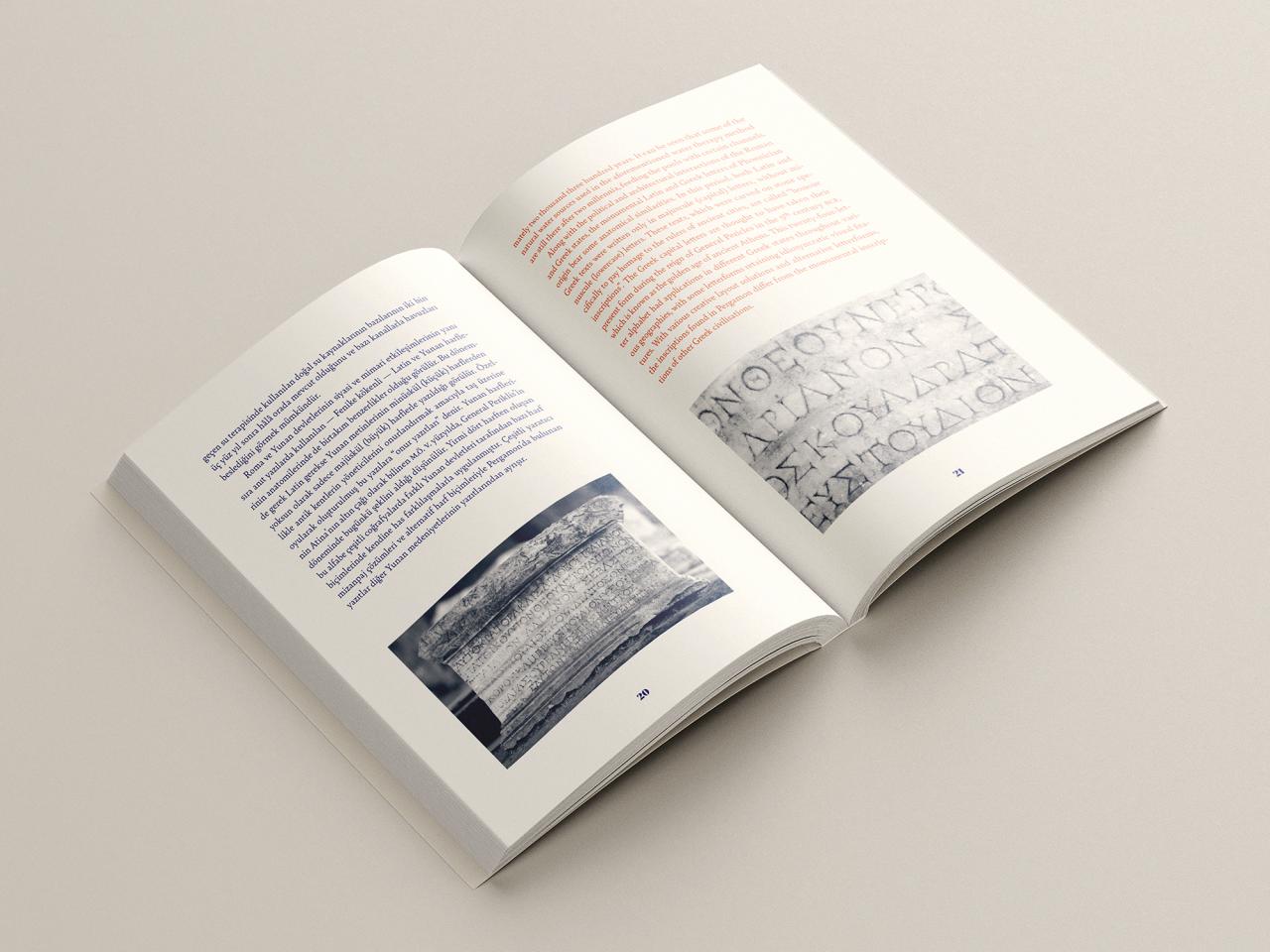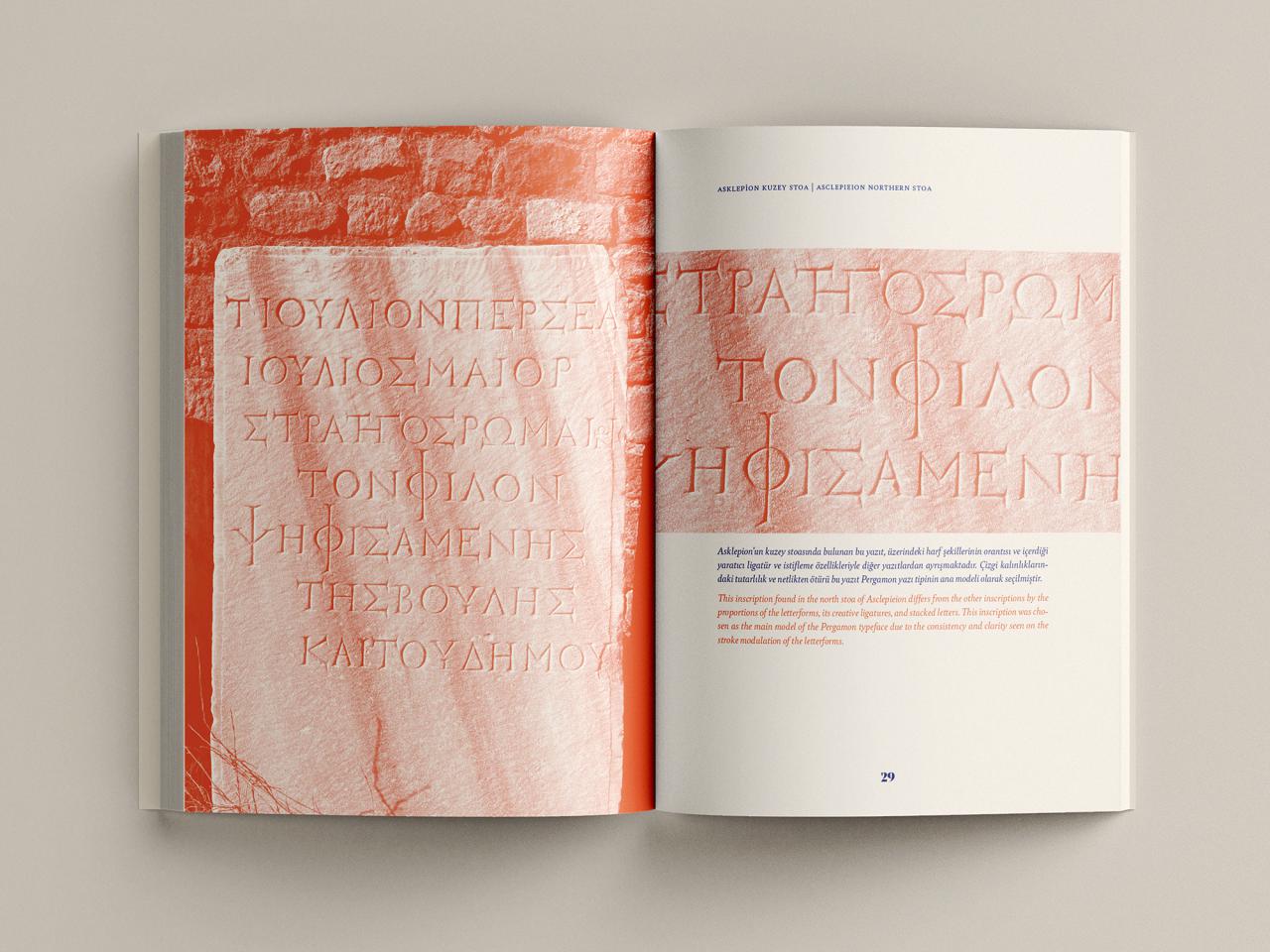"PERGAMON" A Greek Script Typeface Design, Onur F. Yazıcıgil
The Pergamon typeface is a digital typeface project that is developed by Onur Yazıcıgil while participating in the Gate 27 Ayvalık Artist Residency Program between 13 September and 6 October, 2022. The project comprises the documentation of Pergamon’s elaborate epigraphic cultural heritage and its transformation into a typeface design via a contemporary digital medium. The ultimate goal of the project is to bring a breath of fresh air to the approximately 2200 year-old carved stone inscriptions by digitising and making them functional in today’s context. It can also be considered as a tool for contemporary designers who deal with Greek script typography, as they can discover the origins of these letters and create new typographic contexts. Additionally, it can be regarded as an educational tool that contributes to archaeology students’ epigraphic and linguistic training, for it offers an opportunity to study these letterforms in advance. What interested Yazıcıgil personally was to explore the letters’ visual journey by tracing their craftspeople from two millennia ago. This book presents photographs of the inscriptions, which are the main elements of this project; a digital typeface design based on them, and the visual output of the jewellery, as a three-dimensional object designed with this typeface. Short explanations follow with respect to the design decisions taken during the digitisation process.
The Anatolian continent, also referred to as Asia Minor, is a cultural geography that has hosted various civilisations for thousands of years. Located in the Bergama district of Izmir province today, Pergamon is a culturally rich and significant Hellenistic capital and a metropolis city of the Roman period in the Mysia region. The twenty-four-letter Greek alphabet had applications in different ancient Greek city-states (polis) throughout various geographies, with some letterforms retaining idiosyncratic visual features. Pergamon is one of the cities that contain unique “inscriptions of honour” (tituli honorarii) carved on stone specifically to pay homage to its rulers. This book presents a Greek script typeface revivalism project based on the documentation of Pergamon’s elaborate epigraphic cultural heritage.


